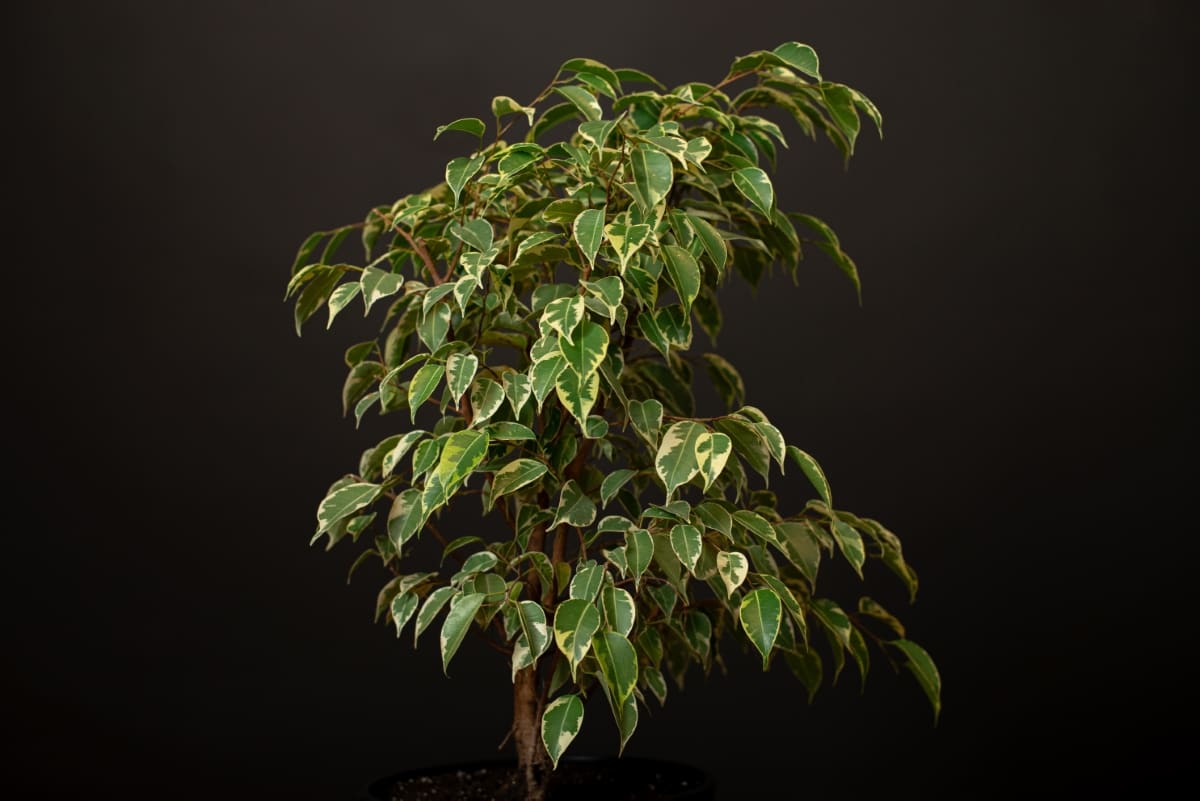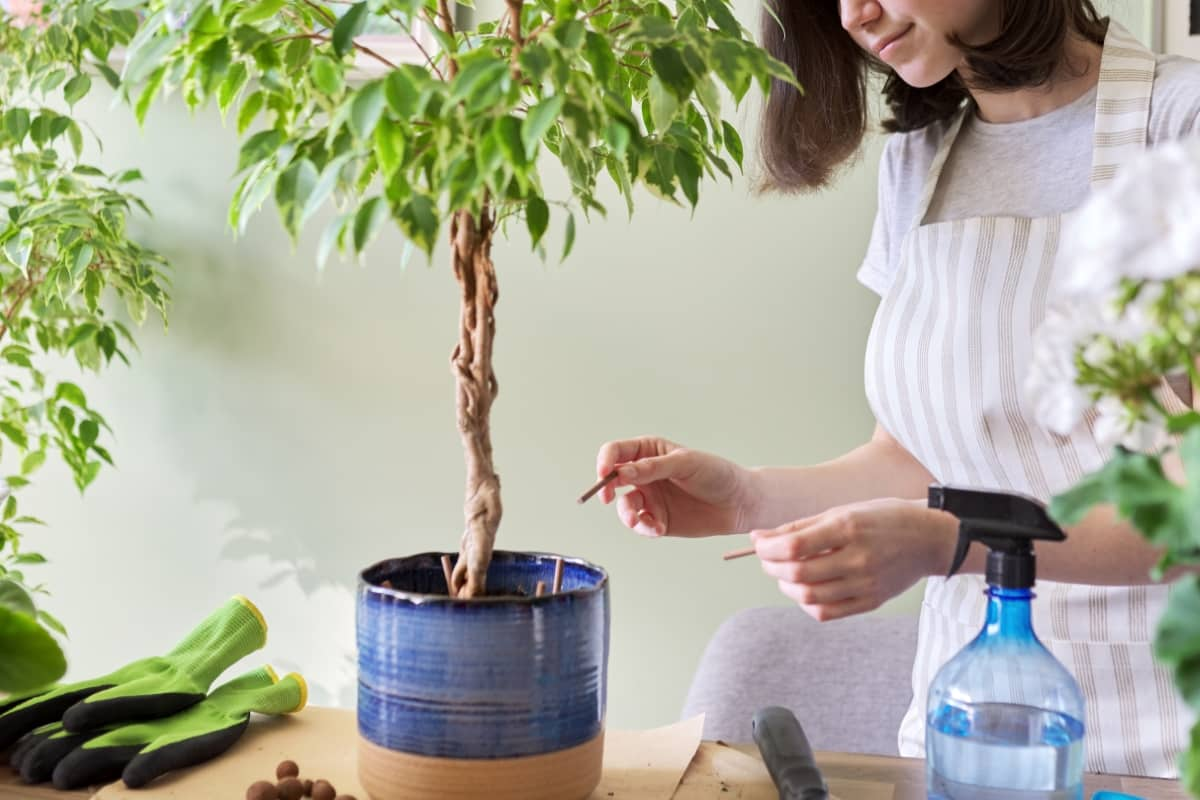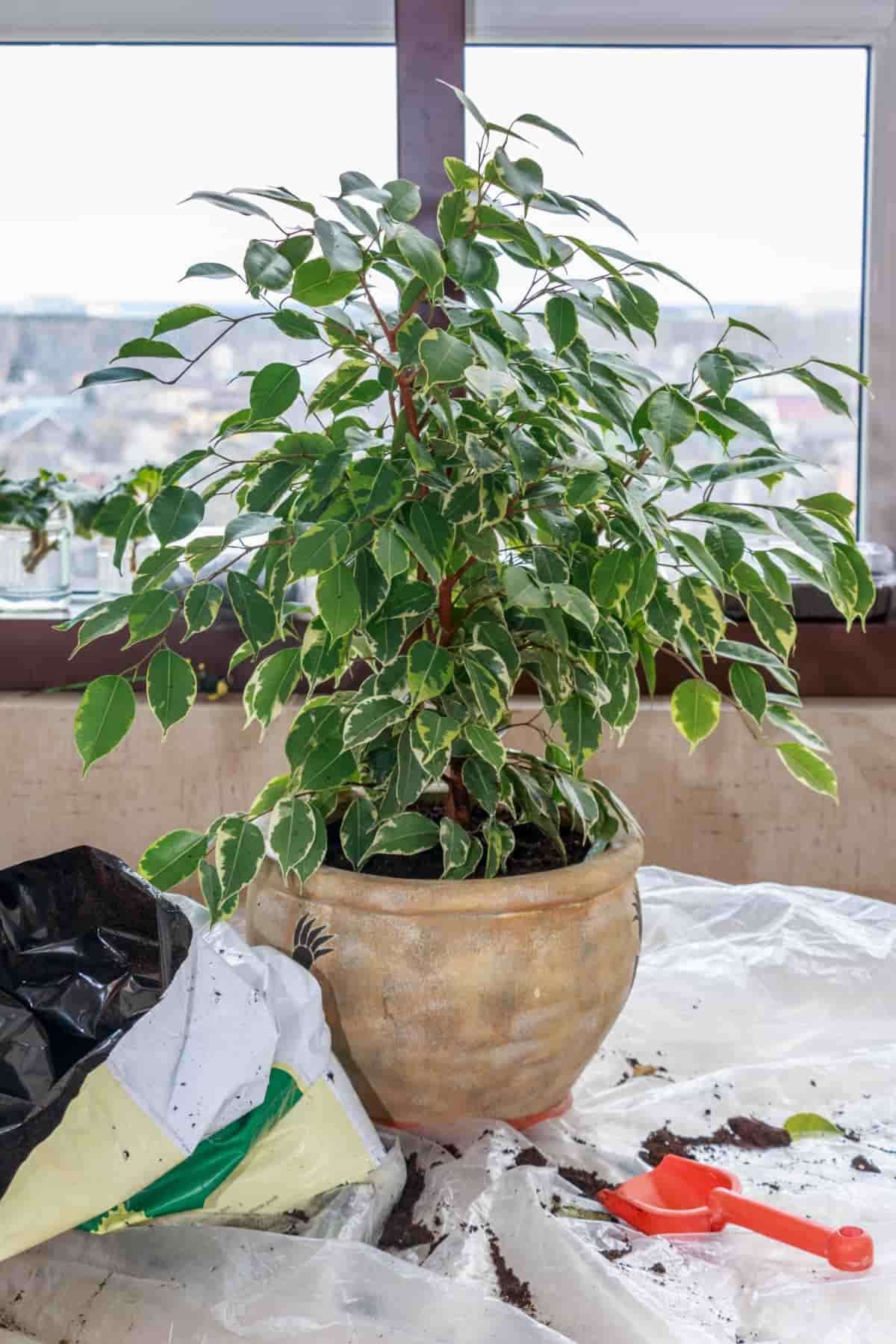Propagation refers to the act of making more plants through various methods, such as taking cuttings or dividing roots. Propagating a Weeping Fig can be an exciting and rewarding experience. Whether you choose to propagate in water, soil, or air with the help of a rooting hormone or propagate a weeping fig without a rooting hormone, each method offers its unique benefits.

No matter which method you decide to try, remember that patience is key when propagating Weeping Figs. It may take some time for roots to develop and new growth to appear. But with proper care and attention, you’ll soon have thriving Weeping Fig plants ready to enhance your indoor or outdoor space.
How to Propagate Weeping Fig: A Step-by-step Guide
Best Soil Mix for Weeping Fig Propagation
When it comes to propagating Weeping Figs indoors, choosing the correct soil mix is crucial for success. The ideal potting mix for Weeping Fig propagation should provide good drainage while retaining enough moisture for root development. A popular choice among gardeners is a mixture of peat moss, perlite, and vermiculite. This combination creates a well-draining medium that helps prevent waterlogged roots. Peat moss holds moisture without becoming overly compacted, allowing air circulation around the roots.
Another option is to use a mixture of potting soil and sand. This blend provides adequate drainage while still retaining some moisture. Sand helps to loosen the soil and improve its ability to drain excess water. Some gardeners prefer adding organic matter like compost or well-rotted manure to their soil mix. This enriches the growing medium with nutrients and promotes healthy root growth.
Weeping Fig Propagation from Cuttings
Weeping Fig propagation from stem cuttings is a popular and effective method of growing new plants. With just simple steps, you can easily propagate Weeping Figs and expand your indoor garden. To begin, select a healthy branch or stem from the parent plant. Make sure it has several nodes, which are the areas where leaves attach to the stem. Using sharp pruning shears, make a clean cut just below a node. Next, remove any leaves near the bottom of the cutting.
This will help prevent excessive moisture loss while encouraging root development. If desired, you can also dip the cutting in rooting hormone to promote faster rooting. Prepare a small pot with a well-drained soil mix. Moisten the soil slightly before inserting the cutting about an inch deep into it. Place the pot in a warm area with bright but indirect light. Maintain consistent moisture by lightly misting or watering as needed to keep the soil slightly damp but not soggy. After several weeks, you should start seeing roots forming at the base of your cutting.
Rooting Hormone for Weeping Fig Propagation
Rooting hormone is a useful tool when it comes to propagating plants, including the Weeping Fig. This natural or synthetic substance can help stimulate root growth and increase the chances of success in propagation. When using rooting hormone for Weeping Fig propagation, it’s important to choose the right type. There are different strengths available, so be sure to select one that is appropriate for your specific needs. To use rooting hormone on your Weeping Fig cuttings, dip the freshly cut end into the powder or gel before placing it in soil or water.
In case you missed it: Fig Growing Tips, Techniques, Ideas, and Secrets

This will help encourage root development and improve overall success rates. While rooting hormone can increase your chances of successful propagation, it’s not always necessary. Weeping Figs are known for their ability to root easily without any additional assistance. However, if you want to give your cuttings an extra boost of encouragement, using rooting hormone can be beneficial. Remember that proper care and attention during the entire propagation process are key factors in achieving successful results with Weeping Figs.
Weeping Fig Propagation in Water
Growing new plants from cuttings is an effective way to propagate Weeping Figs in water. It’s a simple and effective way to propagate this beautiful houseplant. First, choose a healthy stem cutting from your Weeping Fig plant. Make sure the cutting has at least three or four leaves and is about 4-6 inches long. Next, fill a glass with clean, room-temperature water. Place the cutting into the water, making sure that at least one node (where the leaf was attached) is submerged.
You can use small stones or pebbles to help keep it upright if necessary. Now, find a bright spot in your home where your cutting will receive indirect sunlight. Change the water every week or whenever it starts to look murky. After a few weeks, you should start to see roots forming on your Weeping Fig cutting. Once these roots are about an inch long, you can transfer your plant into the soil if desired.
Weeping Fig Propagation Timeline
Weeping Fig propagation can be an exciting and rewarding process, but it’s important to understand that it takes time. The first step in the Weeping Fig propagation timeline is selecting a healthy parent plant and taking cuttings. Once you have your cuttings, remove any lower leaves and dip the ends in the rooting hormone if desired. Then, place them in water or a well-draining soil mix.
Over the next few weeks, you’ll start to see some signs of progress. New growth may appear at the nodes of your cuttings, indicating that roots are beginning to form. As time goes on, continue to care for your cuttings by providing them with adequate light conditions and maintaining appropriate temperature and humidity levels. Regularly check their moisture levels to ensure they don’t dry out.
Within several months, you should start to see significant root development on your propagated Weeping Figs. At this point, they are ready for transplanting into their pots or directly into the garden if weather permits. Remember, every plant is unique, and there may be variations in timing depending on environmental factors such as temperature and humidity levels.
Air Layering Weeping Fig Propagation Method
Air layering is a popular method of propagating Weeping Fig plants. It may sound complicated, but with a little patience and creating optimal conditions for propagating Weeping Fig plants, you can successfully propagate your Weeping Fig using air layering. To start, select a healthy branch that is flexible enough to bend without breaking. Make an upward cut about one-third of the way through the branch and remove any leaves or buds in that area. Apply rooting hormone to encourage root growth.
In case you missed it: Fig Gardening For Beginners – How To Start, FAQs

Next, wrap moist sphagnum moss around the cut section of the branch and secure it with plastic wrap or aluminum foil. This will create a humid environment for root development. Be sure to keep the moss moist throughout the process. After a few weeks, roots should begin to form within the moss. Once they are well-established, carefully cut below the rooted section and pot it up in a well-draining soil mix.
Weeping Fig Propagation in Perlite
Weeping Fig propagation in perlite is a popular method among plant enthusiasts due to its high success rate. Perlite, which is a lightweight volcanic rock, provides the best drainage for the roots of the Weeping Fig plant. To propagate your Weeping Fig in perlite, start by taking a stem cutting from a mature and healthy plant. Make sure the cutting has at least two nodes. Next, fill a small container with moist perlite and make a hole in the center using your finger or a pencil.
Insert the cutting into the hole and place the container in a warm location. Mist the cutting regularly to maintain humidity levels around it. Within a few weeks, you can observe new roots forming on your Weeping Fig cutting. Once these roots are about an inch long or longer, you can carefully transplant the rooted cutting into well-draining potting soil. Continue to care for it as you would a mature Weeping Fig plant.
Temperature and Humidity Requirements
When it comes to temperature requirements, Weeping Figs prefer a range between 15-24°C. They can tolerate slightly cooler temperatures but will suffer if exposed to anything below 10°C. Humidity is equally important for Weeping Fig propagation. These plants originate from regions with high humidity levels, so replicating those conditions is essential. Aim for a relative humidity level of around 50-60%.
Weeping Fig Propagation Light Conditions
Light is a crucial factor when it comes to propagating Weeping Figs. When propagating, it’s important to provide the right amount of light for successful growth. Ideally, place your Weeping Fig cuttings or newly propagated plants in an area that receives bright but filtered sunlight throughout the day. If you’re growing Weeping Figs indoors, placing it near a north or east-facing window is best. This will ensure that it gets sufficient light without being exposed to direct sun rays.
On the other hand, if you’re growing your Weeping Fig outdoors, find a spot with dappled shade or where it will receive only partial sunlight during the day. Excess direct sunlight can cause leaf burn and hinder propagation success. Remember to monitor your plant closely and adjust its location accordingly if you notice any signs of stress, like yellowing leaves or leaf drop. Providing consistent and appropriate lighting conditions will help promote healthy growth during the propagation process.
In case you missed it: How to Grow Fig Trees/Fruits from Seed to Harvest: Check How this Guide Helps Beginners

Conclusion
Propagation of Ficus benjamina plants can be rewarding and allow you to create new life and expand your plant collection. Each method has its advantages and success rates. Water propagation is an easy way to start with minimal supplies needed. Cutting propagation allows you to produce multiple new plants from one parent plant. Soil propagation provides a more traditional approach that mimics natural growth conditions. Only some attempts will be successful, but with practice and care, you can enjoy watching your Weeping Fig thrive as it grows from these propagated offspring.
- How to Grow Hibiscus from Flower
- Plantation Ideas for Home Decoration: A Beginners Guide
- Flower Garden Designs and Layouts for Beginners
- Planting and Spacing Techniques in Papaya: A Beginner’s Guide
- Growing Gold: Essential Techniques for Planting Pineapples
- How to Make Kalanchoe Plant Bushy: Home Remedies and Solutions
- 11 Reasons Why Your Gardenia is Not Blooming: Home Remedies and Solutions
- Eco Elegance: The Guide to Designing a Drought-Tolerant Landscape
- Gardening on a Slope: Strategies for Hillside Landscaping